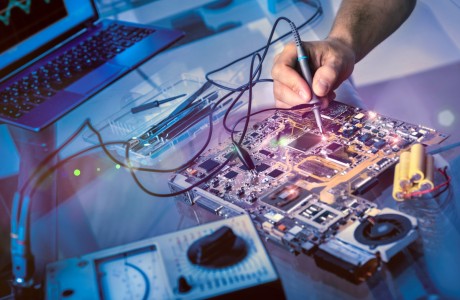System Integration
ptg establishes integration laboratories for multidisciplinary systems in diverse fields such as: Automotive industry, pharmaceutical and medical industry, security industries, space industries, renewable energy industries, industry, etc.
Defining and setting up system integration includes the following topics:
- Characterizes simulation equipment required in lab.
- Defines the reality picture required to implement tests.
- The required work environments.
- Test means and test equipment.
- Software and hardware to run the tests.
- The scenarios and reality simulations including artificial intelligence systems.
- Define lab schedules.
As part of the process of defining the combinations, various documents are written, including:
- Definition of a system integration document
- ATP documents for the various systems.
- Integrative testing document.
- Requirements documents for test equipment.
- Interfaces and ICD documents that include a detailed description of the interfaces.
Software Integration Solutions
Any organization that engages in multidisciplinary systems engineering faces the problem of integration between systems and components, whether it's hardware or software or off-the-shelf systems. In order to answer development needs, the integration problems must be answered in different aspects.
ptg has gained a great experience in setting up integration laboratories, operating laboratories and defining the required tests to respond to the integration of multidisciplinary systems.
Solutions for system integration challenges
Interoperable standards
Use of standard protocols, interfaces, and hardware specifications can help avoid compatibility issues between different software and hardware systems. For example, USB is a standardized protocol used for connecting different hardware devices to a computer.
API integration
API (Application Programming Interface) enables different software applications to communicate with each other. Integration of API allows third-party software products to interact smoothly with the main software.
Middleware
Middleware is software that sits between different software components and helps them communicate more effectively. It is commonly used to link software systems that do not have compatible interfaces or communication protocols.
Plug and Play technology
Plug and Play technology allows hardware devices to be automatically configured by the operating system without requiring any additional software or driver installation. This makes hardware integration easier and smooth.
Unified architecture
A unified architecture approach can be used to integrate hardware and software solutions. In this approach, hardware and software are designed together from the start, ensuring compatibility between the two.
Device drivers
Device drivers are software programs that enable hardware devices to communicate with the operating system. Installing device drivers can make the hardware devices work with the software system.
Cloud computing
Cloud computing provides a platform where software and hardware resources can be integrated seamlessly over a network remotely. This solves hardware and software integration issues and saves costs on hardware maintenance expenses.
ptg team is your goals partner! Contact us

